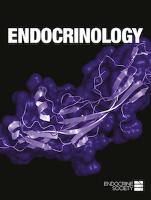Hamson, D.K.
Person Preferred Name
D.K. Hamson
Related Works
Content type
Digital Document
Abstract
Gonadal steroids such as testosterone and estrogen are necessary for the normal activation of male rat sexual behavior. The medial preoptic area (MPOA), an important neural substrate regulating mating, accumulates steroids and also expresses functional androgen receptors (AR). The MPOA is intimately connected with other regions implicated in copulation, such as the bed nucleus of the stria terminalis and medial amygdala. Inputs to the MPOA arise from several areas within the brainstem, synapsing preferentially onto steroid sensitive MPOA cells which are activated during sexual activity. Given that little is known about the distribution of AR protein in the brainstem of male rats, we mapped the distribution of AR expressing cells in the pons and medulla using immunocytochemistry. In agreement with previous reports, AR immunoreactivity (AR-ir) was detected in ventral spinal motoneurons and interneurons. In addition, AR-ir was detected in areas corresponding to the solitary tract, lateral paragigantocellular and α and ventral divisions of the gigantocellular reticular nuclei, area postrema, raphe pallidus, ambiguus nucleus, and intermediate reticular nucleus. Several regions within the pons contained AR-ir, such as the tegmental and central gray, parabrachial nucleus, locus coeruleus, Barrington's nucleus, periaqueductal gray, and dorsal raphe. In contrast with in situ hybridization studies, auditory and somatosensory areas were AR-ir negative, and, except for very light staining in the prepositus nucleus, areas carrying vestibular information did not display AR-ir. Additionally, cranial nerve motoneurons of the hypoglossal, facial, dorsal vagus, and spinal trigeminal did not display AR-ir in contrast to previous reports. The data presented here indicate that androgens may influence numerous cell groups within the brainstem. Some of these probably constitute a steroid sensitive circuit linking the MPOA to motoneurons in the spinal cord via androgen responsive cells in the caudal ventral medulla.
Origin Information
Content type
Digital Document
Abstract
Gonadal steroids are potent regulators of adult neurogenesis. We previously reported that androgens, such as testosterone (T) and dihydrotestosterone (DHT), but not estradiol, increased the survival of new neurons in the dentate gyrus of the male rat. These results suggest androgens regulate hippocampal neurogenesis via the androgen receptor (AR). To test this supposition, we examined the role of ARs in hippocampal neurogenesis using 2 different approaches. In experiment 1, we examined neurogenesis in male rats insensitive to androgens due to a naturally occurring mutation in the gene encoding the AR (termed testicular feminization mutation) compared with wild-type males. In experiment 2, we injected the AR antagonist, flutamide, into castrated male rats and compared neurogenesis levels in the dentate gyrus of DHT and oil-treated controls. In experiment 1, chronic T increased hippocampal neurogenesis in wild-type males but not in androgen-insensitive testicular feminization mutation males. In experiment 2, DHT increased hippocampal neurogenesis via cell survival, an effect that was blocked by concurrent treatment with flutamide. DHT, however, did not affect cell proliferation. Interestingly, cells expressing doublecortin, a marker of immature neurons, did not colabel with ARs in the dentate gyrus, but ARs were robustly expressed in other regions of the hippocampus. Together these studies provide complementary evidence that androgens regulate adult neurogenesis in the hippocampus via the AR but at a site other than the dentate gyrus. Understanding where in the brain androgens act to increase the survival of new neurons in the adult brain may have implications for neurodegenerative disorders. Part of the "Neuroendocrinology" issue.
Origin Information


